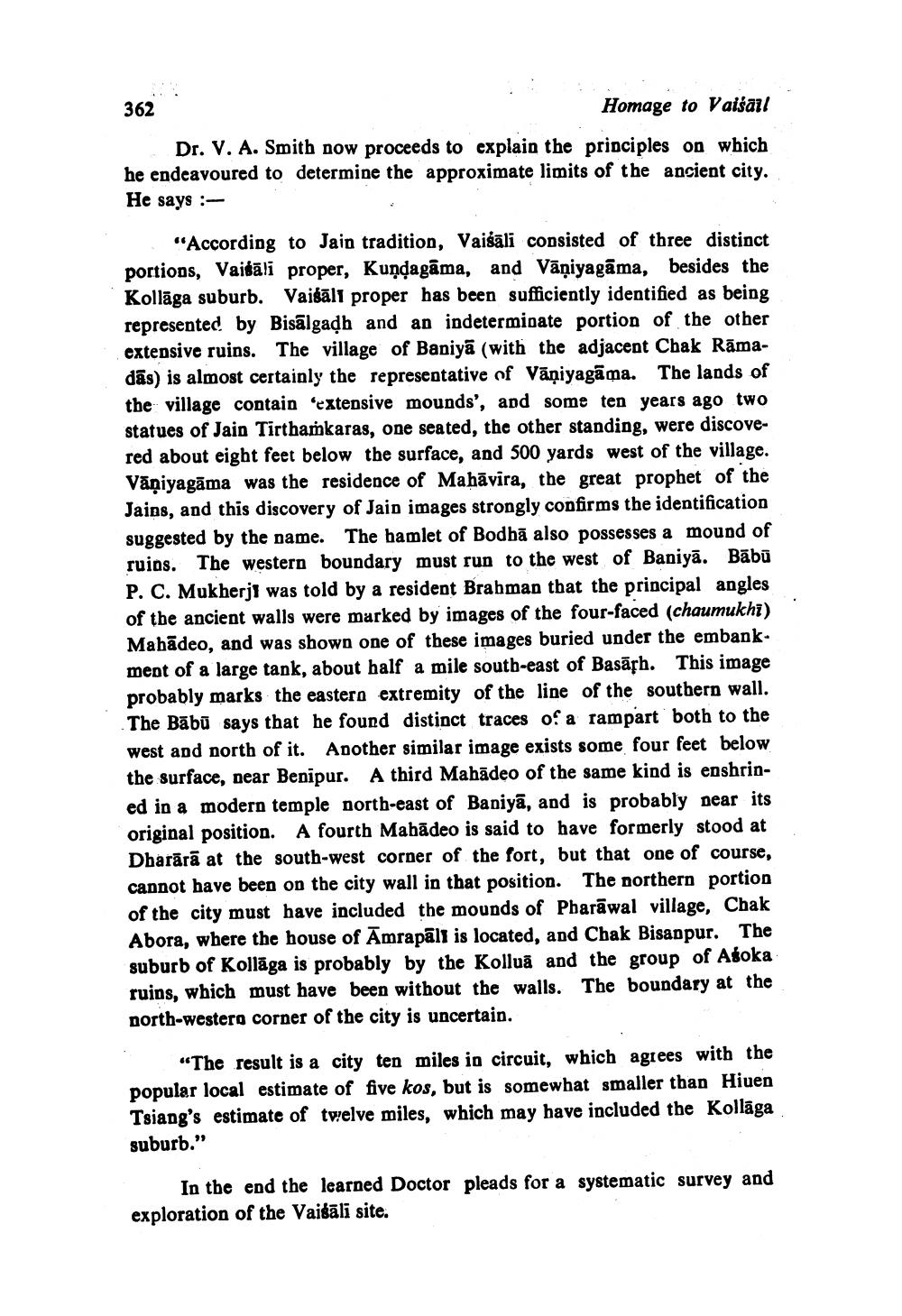________________ 362 Homage to Vaisail Dr. V. A. Smith now proceeds to explain the principles on which he endeavoured to determine the approximate limits of the ancient city. He says : "According to Jain tradition, Vaisali consisted of three distinct portions, Vaigali proper, Kundagama, and Vaniyagama, besides the Kollaga suburb. Vaigali proper has been sufficiently identified as being represented by Bisalgadh and an indeterminate portion of the other extensive ruins. The village of Baniya (with the adjacent Chak Ramadas) is almost certainly the representative of Vaniyagama. The lands of the village contain 'extensive mounds', and some ten years ago two statues of Jain Tirthamkaras, one seated, the other standing, were discovered about eight feet below the surface, and 500 yards west of the village. Vaniyagama was the residence of Mahavira, the great prophet of the Jains, and this discovery of Jain images strongly confirms the identification suggested by the name. The hamlet of Bodba also possesses a mound of ruins. The western boundary must run to the west of Baniya. Babu P. C. Mukherjl was told by a resident Brahman that the principal angles of the ancient walls were marked by images of the four-faced (chaumukhi) Mahadeo, and was shown one of these images buried under the embank. ment of a large tank, about half a mile south-east of Basaph. This image probably marks the eastern extremity of the line of the southern wall. The Babu says that he found distinct traces of a rampart both to the west and north of it. Another similar image exists some four feet below the surface, near Benipur. A third Mahadeo of the same kind is enshrined in a modern temple north-east of Baniya, and is probably near its original position. A fourth Mabadeo is said to have formerly stood at Dharara at the south-west corner of the fort, but that one of course, cannot have been on the city wall in that position. The northern portion of the city must have included the mounds of Pharawal village, Chak Abora, where the house of Amrapali is located, and Chak Bisanpur. The suburb of Kollaga is probably by the Kollua and the group of Asoka ruins, which must have been without the walls. The boundary at the north-westero corner of the city is uncertain. "The result is a city ten miles in circuit, which agrees with the popular local estimate of five kos, but is somewhat smaller than Hiuen Tsiang's estimate of twelve miles, which may have included the Kollaga suburb." In the end the learned Doctor pleads for a systematic survey and exploration of the Vaigali site.




